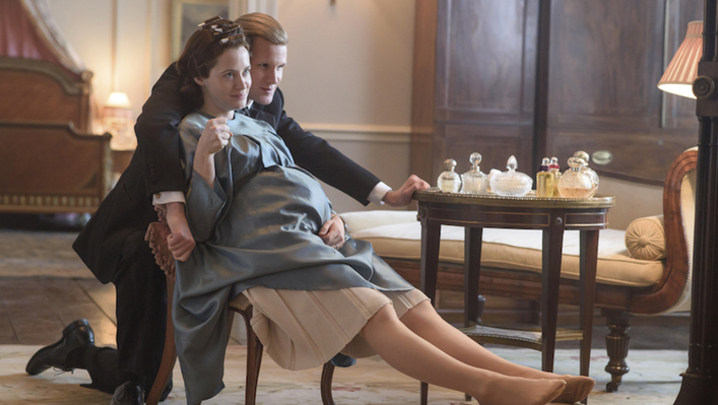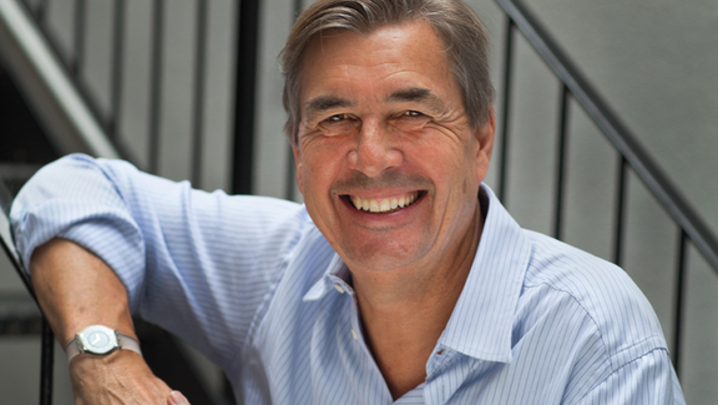Netflix’s autumn blockbuster The Crown is made by film veterans. Stuart Kemp discovers why TV is attracting the best movie-making talent
When the latest project from multiple Oscar nominees Peter Morgan (The Queen) and Stephen Daldry (The Reader) reaches audiences in November, it won’t be in cinemas.
Morgan has created and written The Crown, an extended biopic on the life of Queen Elizabeth II. Daldry is the executive producer and has directed an episode of the show. The series begins with Elizabeth’s marriage in 1947 and aims to recount the story of her life until the present day.
The Crown stars Claire Foy as the young British monarch and former Doctor Who Time Lord Matt Smith as her new husband, Prince Phillip.
An ambitious six seasons of 10 episodes are planned. Netflix is reported to be pumping £100m into the show. The on-demand service hopes that it will be a jewel in the crown of its original programming to rank alongside the remake of House of Cards.
Netflix Chief Content Officer Ted Sarandos says that The Crown, brought into being by film talent, is a story that his service can “produce on a larger scale than anybody else and that we think we can win the day on”.
The series is the latest in a string of mammoth TV projects mounted and produced by people who have been corralled from the big screen: Oscar winner Steve McQueen is working on a family-and-friends drama set in west London for the BBC; and David Fincher is directing and executive producing the Netflix-backed FBI crime drama Mindhunter. Baz Luhrmann, meanwhile, is in post on The Get Down, a drama set in 1970s New York, for Sony Pictures Television and Netflix.
Danish director Susanne Bier’s glossy John le Carré adaptation, The Night Manager, made for the BBC and AMC in the US, showcased the skills she acquired in the movie business.
Oscar winner Jane Campion also switched medium to make Top of the Lake as a mini-series for the BBC and the Sundance Channel, while Martin Scorsese executive produced and directed an episode of HBO’s music-industry drama Vinyl.
The film-to-TV crossover is fuelled by the big bucks that well-heeled global distribution networks can afford to lavish on product
These are just the tip of the iceberg. The film-to-TV crossover is fuelled partly by the big bucks that well-heeled global distribution networks such as Netflix and Amazon can afford to lavish on product. But three other factors support the shift.
The first is the tax credits available in the UK to producers of high-end TV programmes. Second, and just as important to film-makers, is the creative breathing space that they are offered when working in TV. Why cram a story into 90 minutes when you could tell it in 10 60-minute parts?
Finally, there is the financial squeeze being felt by mid-range film producers. Hollywood studios and smaller production companies alike are concentrating on fewer, bigger tentpole properties and on established franchises. In the $35m range, budgets are harder than ever to assemble.
“The creative space that premium drama occupies on television is the creative space that a lot of our films used to occupy,” says Tim Bevan, Co-chair of Working Title Films.
He is the co-founder of one of the UK’s most successful film production companies. Working Title’s credits include Love, Actually and Bridget Jones’s Diary. In 2010, Bevan and partner Eric Fellner took the decision to set up a TV division with backing from NBCUniversal.
“We are probably doing a bit more in the movie space than in the TV space right now, but I can see that changing in the next couple of years, certainly in terms of hours produced,” Bevan says.
Six months ago, Working Title brought in renowned TV producer Andrew Woodhead to lead the company’s British TV arm. He had helped steer Sky’s high-profile series Fortitude, BBC spy drama Spooks and The Fixer for ITV. Across the pond in LA, veteran TV executive Andrew Stearn runs the US side of the operation.
“Because of the international marketplace, the budgets are changing. This means that what you are capable of achieving is greater as well,” says Woodhead.
With US premium cable shows able to offer between six and 10 hours to tell a story and develop characters, television is a very good space for character-driven material.
"Telling a story over multiple seasons gives you the opportunity to explore characters in greater depth"
Harry Potter, Gravity and Paddington producer David Heyman formed Heyday Television, a joint venture with NBCUniversal International Studios, last year to create premium, long-form, scripted content for a global marketplace. “Telling a story over multiple seasons gives you the opportunity to explore characters in greater depth, develop them and see them grow over a period of time,” says Heyman. “It’s one of the many things that happened with [Harry] Potter in both books and films. The audience built a sense of ownership over the characters and that is both appealing and enjoyable.”
Film producers Ben Pugh and Rory Aitken, who worked together on Eran Creevy’s Welcome to the Punch, founded 42 with ex-Independent Talent agents Josh Varney and Kate Buckley in 2013.
It is one of the very few UK companies straddling production and talent management (such entities are common in Hollywood) and moves seamlessly between film and TV projects.
The company hired former BBC drama commissioner and author Eleanor Moran to run its TV division, which has 10 TV projects in active development with UK broadcasters and two with US ones. It is half way through production on a four-part, animated adaptation of Richard Adams’s Watership Down for the BBC in the UK and Netflix everywhere else in the world.
The approach to financing Watership Down was very similar to that for an independent film in that it involved a tapestry of funders. Moreover, the show is bonded (an insurance paid to guarantee the project is completed), a new thing for television, thanks to the reality of these more complex financing structures.
“We’ve been doing complicated financial closing on independent films for ages,” says Varney. “It’s completely new to television, so traditional TV producers who are now doing more international shows are having to learn a new skill just to continue making that type of television. For independent film producers it’s the formats, be it series or single films, that they don’t know so well.”
Also, talent deals are much more transparent in TV, compared with film’s infamously opaque world of residuals and box office-related pay. “Talent can probably get a deal that exceeds what you’d expect to make on a feature film,” says Bevan. “And television displays certainty.”
Number 9 Films, headed by Stephen Woolley and Elizabeth Karlsen, whose recent credits include Todd Haynes’s Carol, starring Cate Blanchett, is stepping into TV drama production, too. Karlsen is teaming up with Nicola Shindler’s Red Production Company to “learn from the best”. Together, they are shepherding an adaptation of Henry James’s Portrait of a Lady to the small screen.
“We decided that we would team up with someone because we haven’t done television before,” says Karlsen. Her experience in producing independent films for more than 20 years has armed her with caution.
She warns against the notion held by many independent film producers that TV is easier to set up than film, both creatively and financially. “We only get to know about the things [on television] that we see,” she points out. “I’m sure there are many stories of things that fall by the wayside.”
Another market pressure is that the best writers, whether they work in TV or film, are all booked up now.
“Change breeds opportunity and it’s a good time to be a disruptive style of company in an industry that is different to what it was five years ago,” notes 42’s Aitken. “The only certainty we have is that it will be seismically different five years from now.”




